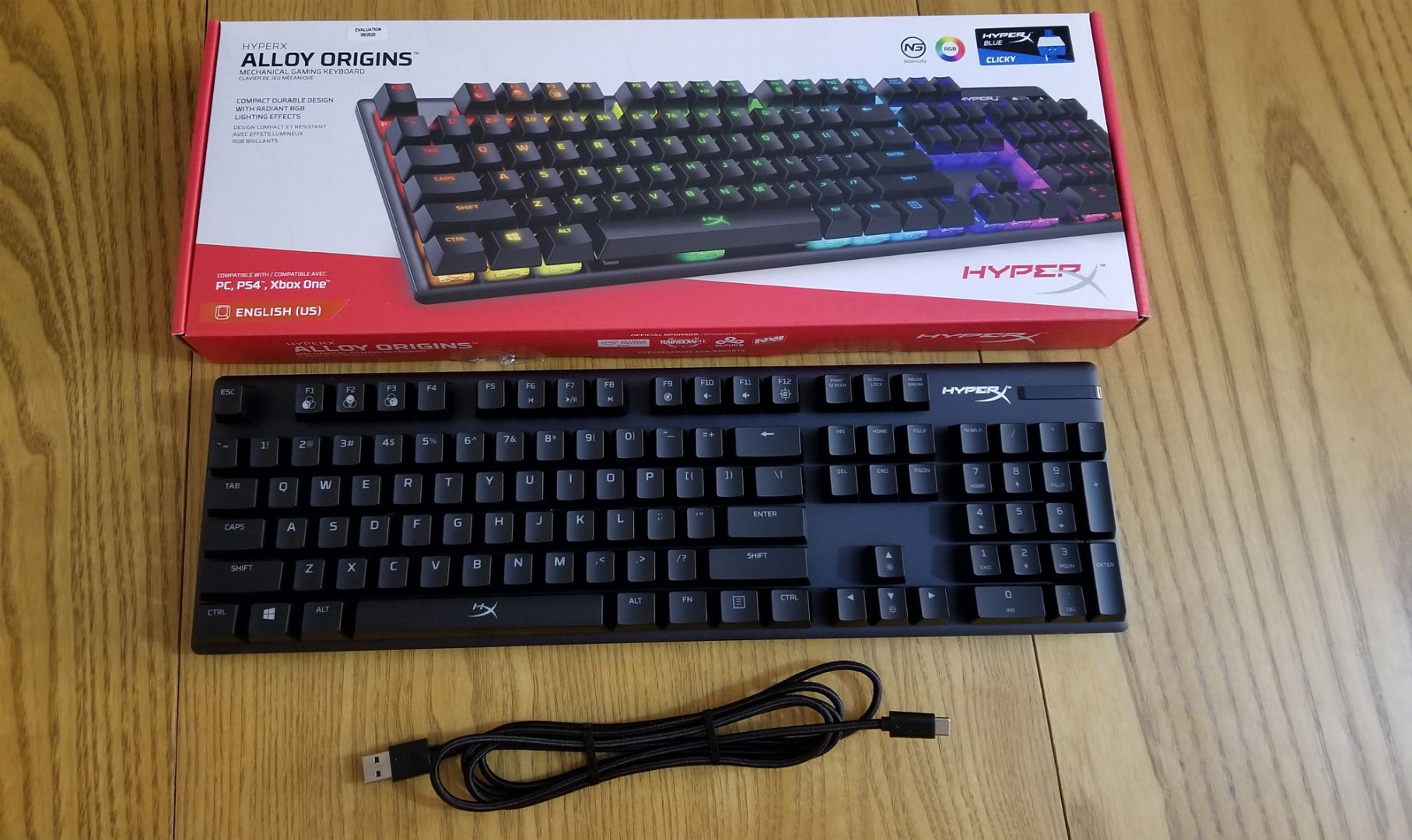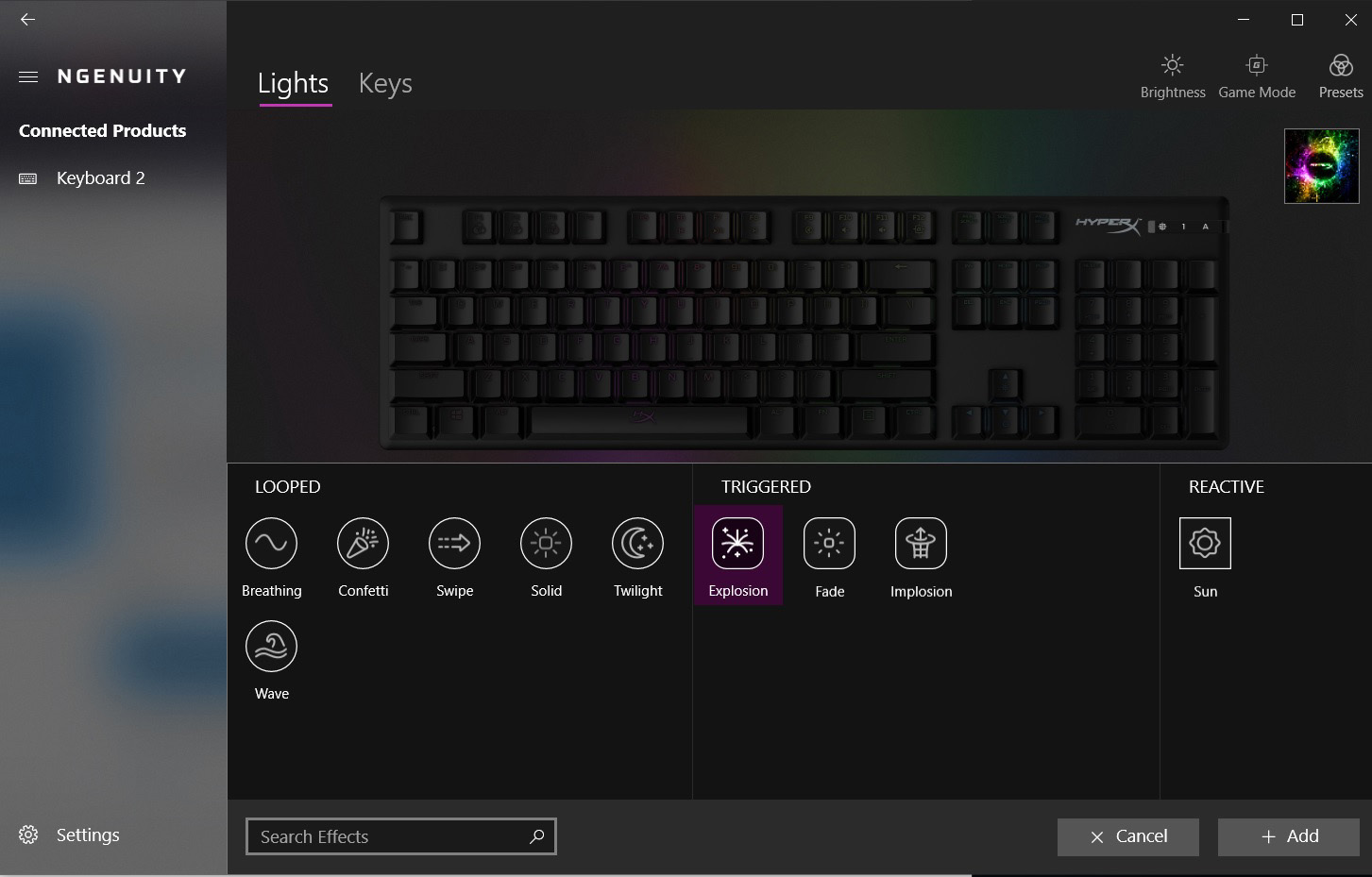Last week, HyperX released another keyboard in their Alloy Origins line: the Alloy Origins Mechanical Gaming Keyboard with HyperX Blue Switches. This is their first full-sized keyboard to receive HyperX blue (clicky) switches.

I’ve reviewed the Alloy Origins keyboard with both HyperX Red and Aqua switches in the past, and (as expected) the HyperX Blue switches version is identical in form and function, excepting the new switches. As I did with my Aqua switches review, let's do a quick refresher on the Alloy Origins. The body is full-size with an aircraft-grade aluminium frame and has three adjustable tilt angles (3°, 7°, or 11°) using a clever foot design. While the keyboard is fully usable out of the box, users will need to use the NGenuity Software (only supported on Windows 10) in order to take advantage of the full customization options (lighting effects, Game Mode settings, and key macros). The lighting effects are extensive, with users being able to target specific keys, layer lighting effects, control brightness and effect speed, and much more. Once users are happy with their custom settings in NGenuity, it just takes a few seconds to sync them to the peripheral and the keyboard will remember them no matter what Windows 7, 8, 8.1, or 10 device it’s plugged into with its detachable USB Type-C braided cable.

All the Origins keyboards use the patented in-house HyperX switches, currently available in Reds, Aquas, and Blues (named for their physical color). These roughly correspond to the more familiar Cherry MX Reds, Browns, and Blues with Red being a signifier for Linear switches, Aqua/Brown denoting Tactile switches, and Blue representing Clicky switches. In Linear switches, the travel path is a straight line while Clicky switches have a small bump in the travel path downwards accompanied with an audible “click” when pressed (thus their name). Since Linear switches don’t have to reset past a bump on a repeat press, they’re preferred by gamers who want speed on repeated key presses (i.e. games that require quick double or triple taps). Clicky switches, on the other hand, are preferred by gamers who want more accuracy and sound feedback than a Linear switch provides (perhaps for typing accuracy/satisfaction or for games where an accidental repeat press is undesired).
